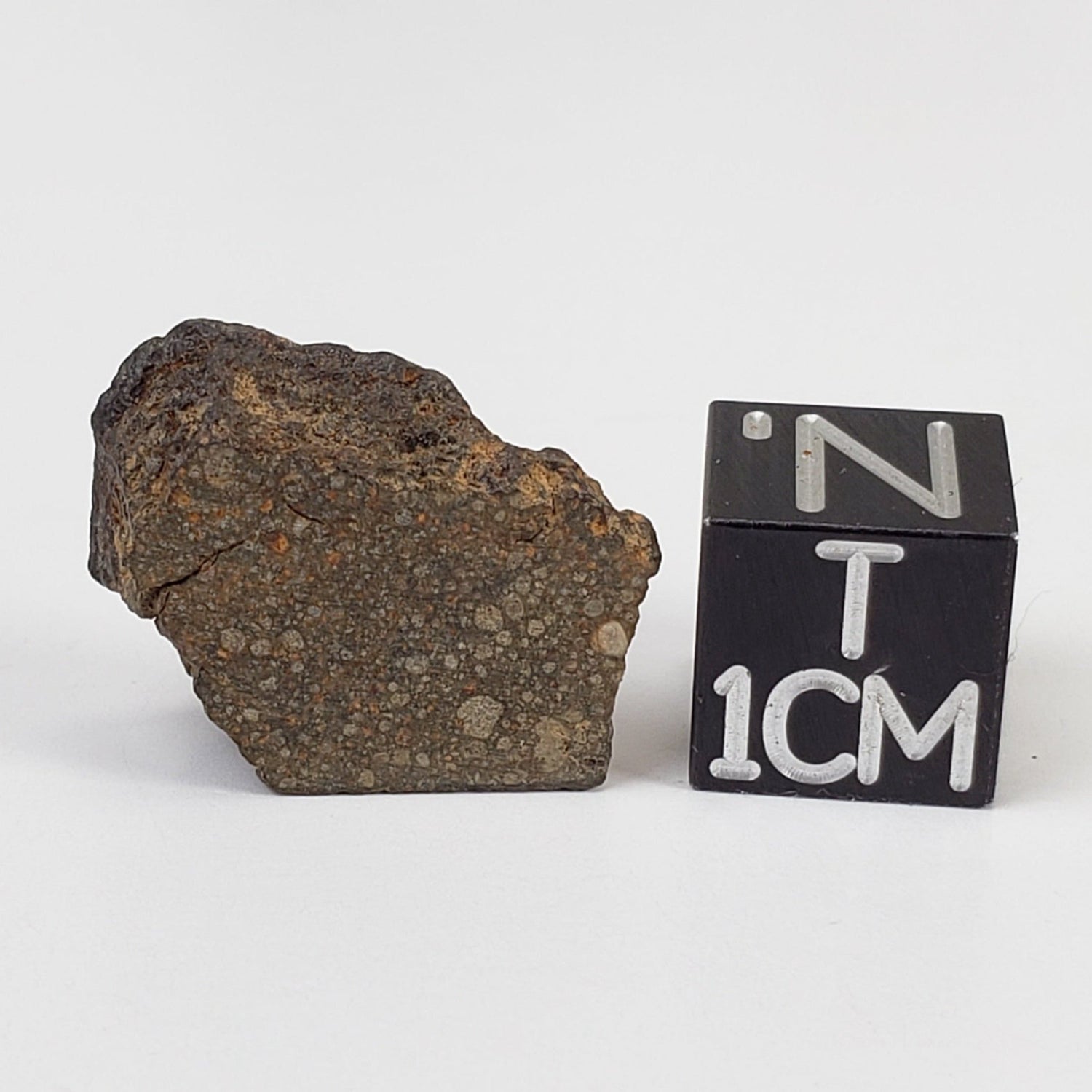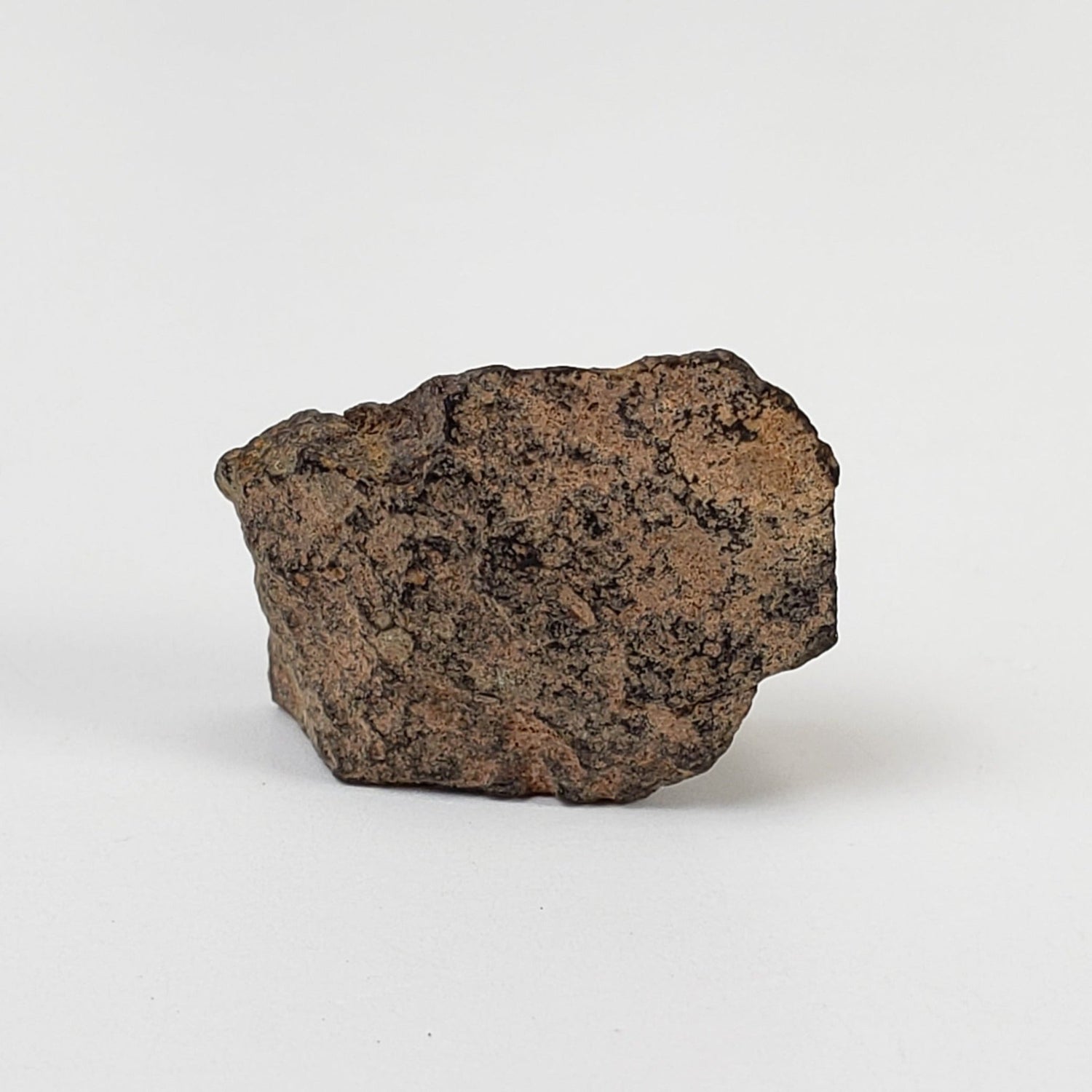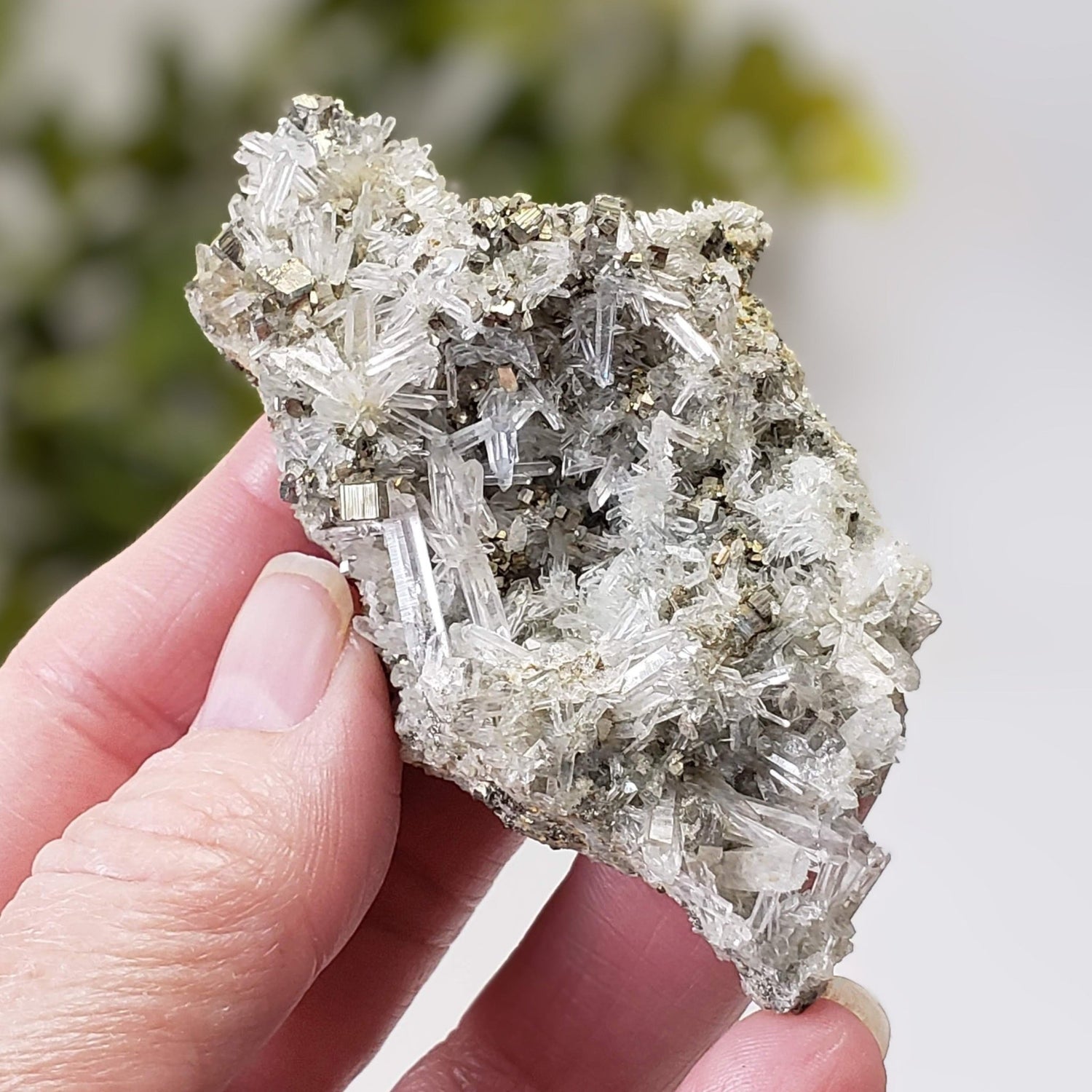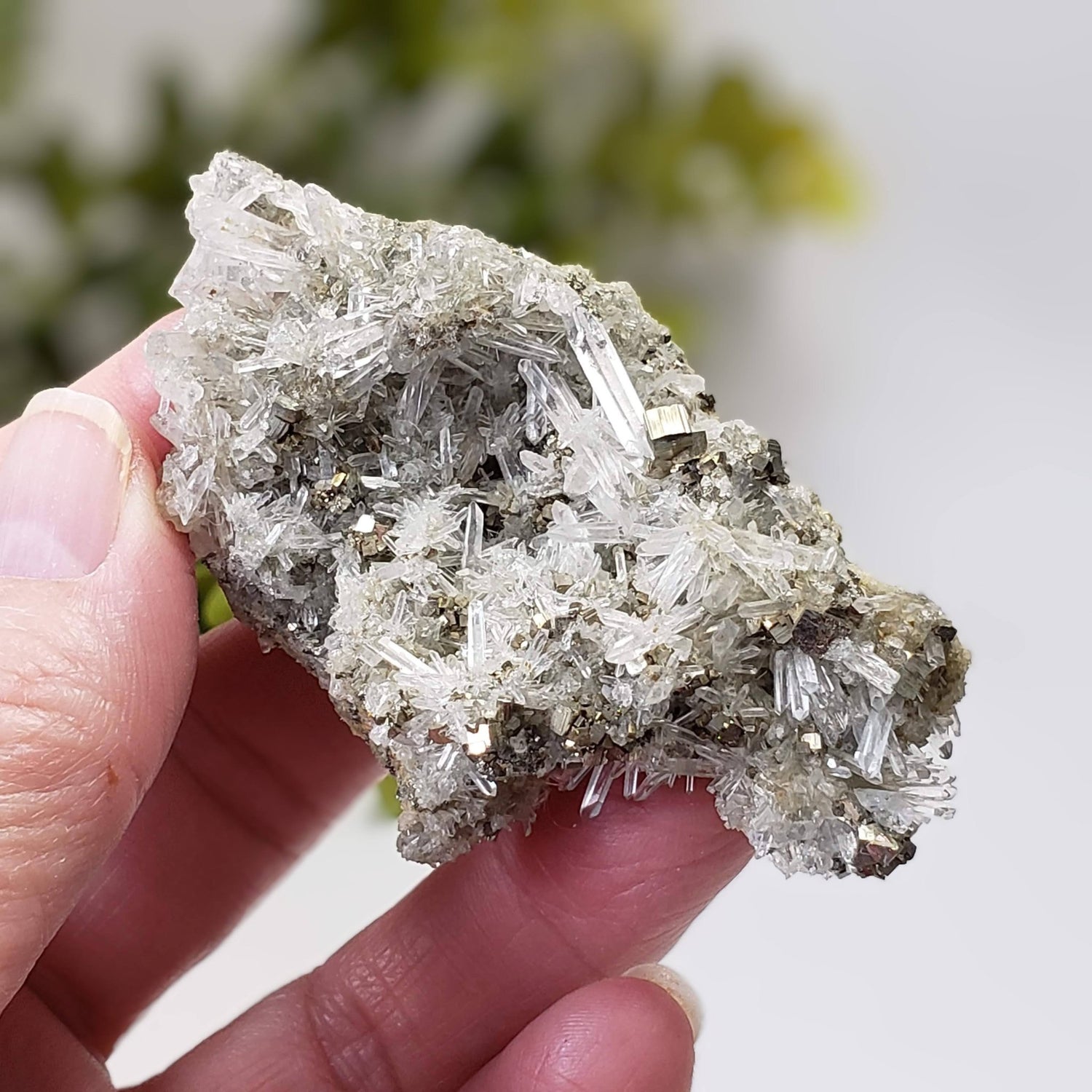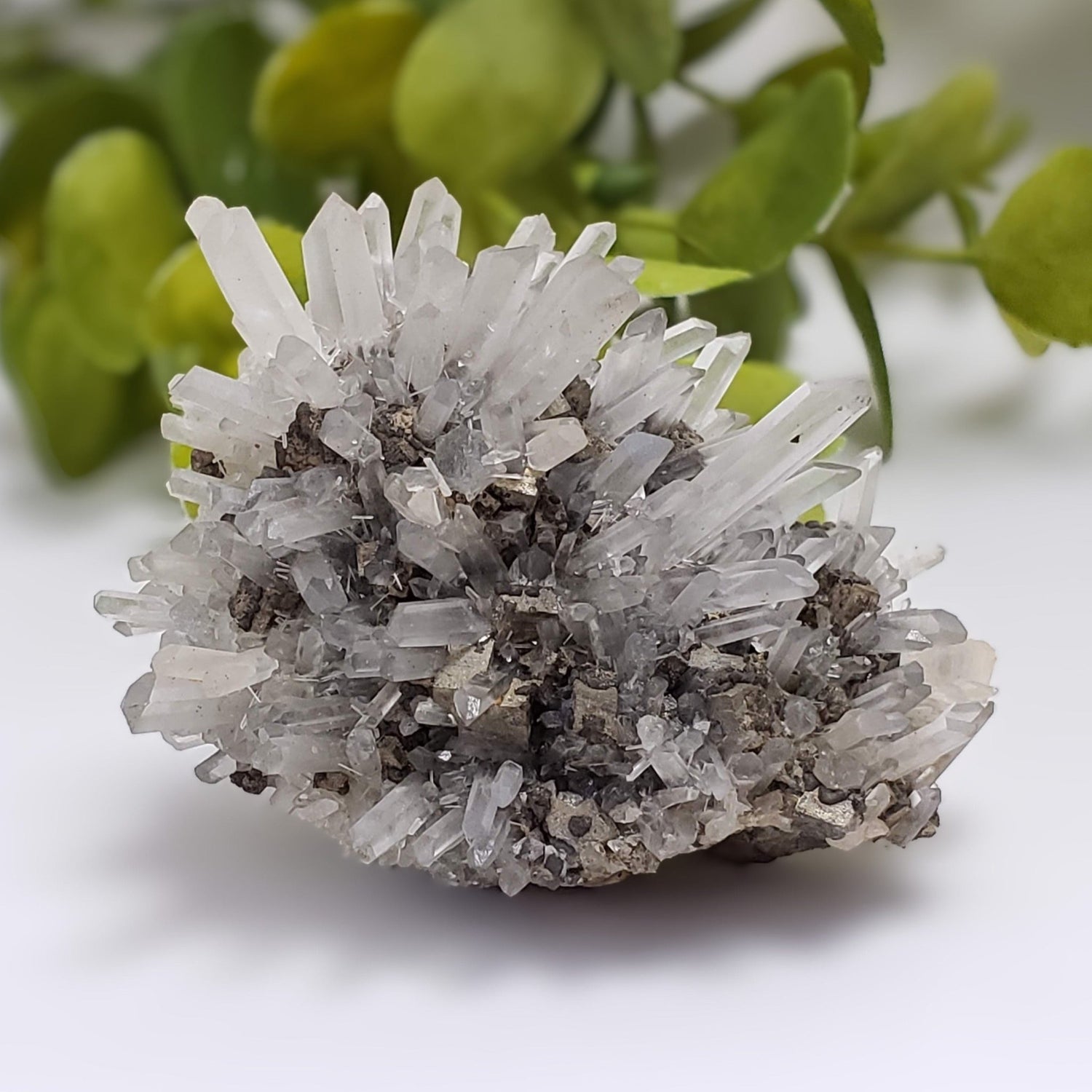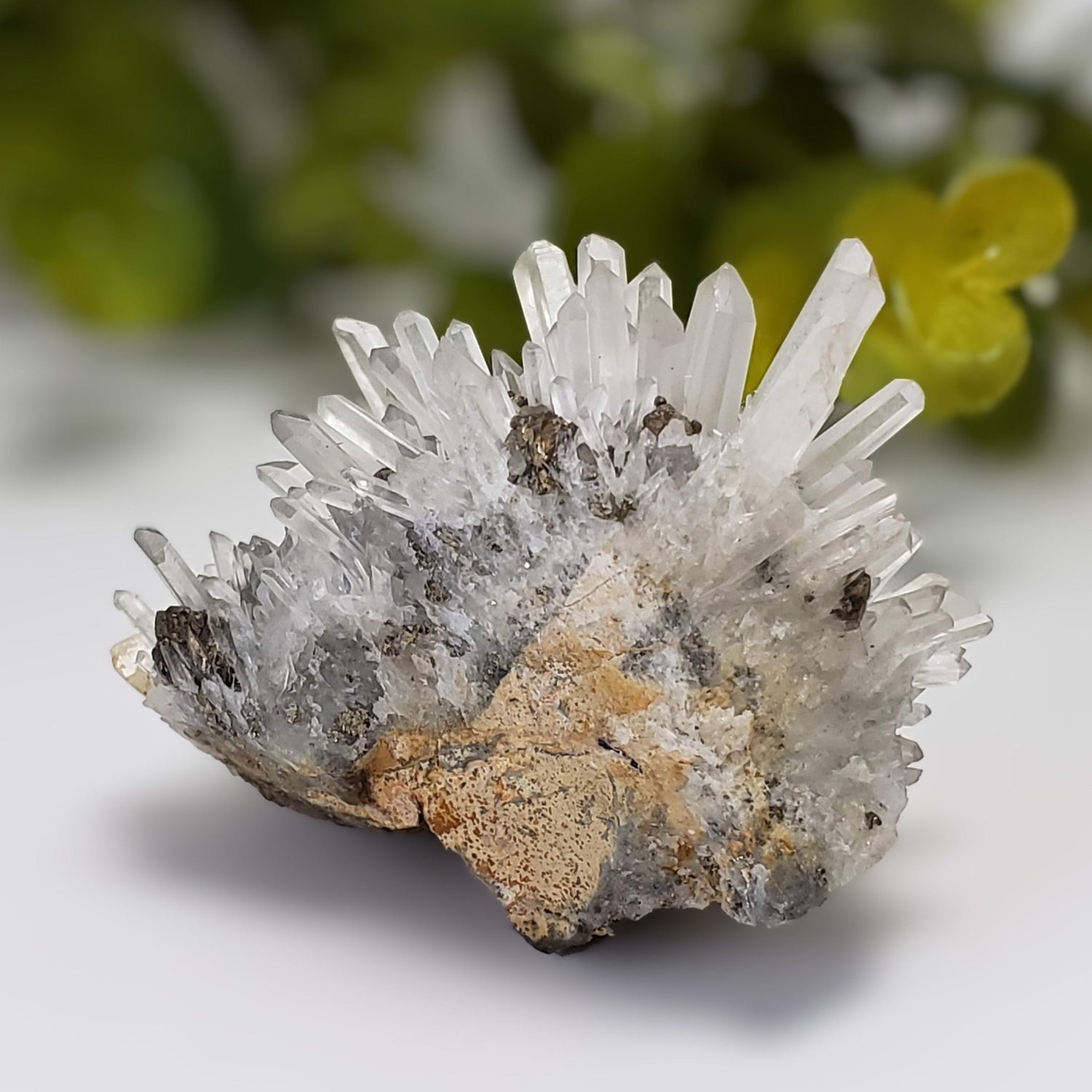Sort by:
305 products
305 products
This is a stunning Henbury classified meteorite weighing 6.88 grams. Its dimensions are 21x11x10mm. This Iron (IIIAB) Medium Octahedrite classified meteorite was found in the Northern Territory of Australia in 1931. So far approximately 2T of this material have been recovered. This piece displays extremely well. This Australian find is very well shaped and preserved. These pieces are becoming more difficult to acquire so this is a good time to get a fine specimen.
Henbury fell 8 miles southwest of the town of Henbury, Australia almost 10,000 years ago. RA Alderman investigated the site in May 1931 based upon Aborigine stories. He found 13 craters, the largest of which was 720 x 360 feet. Few meteorites were found in the largest three craters indicating an explosive impact. Some of the Henbury meteorites are shrapnel shaped indicating this explosive ending and some have smooth edges indicating abrasion by an atmospheric passage.
Would be a beautiful addition to any new or existing collection. Will come with a Canagem specimen card.
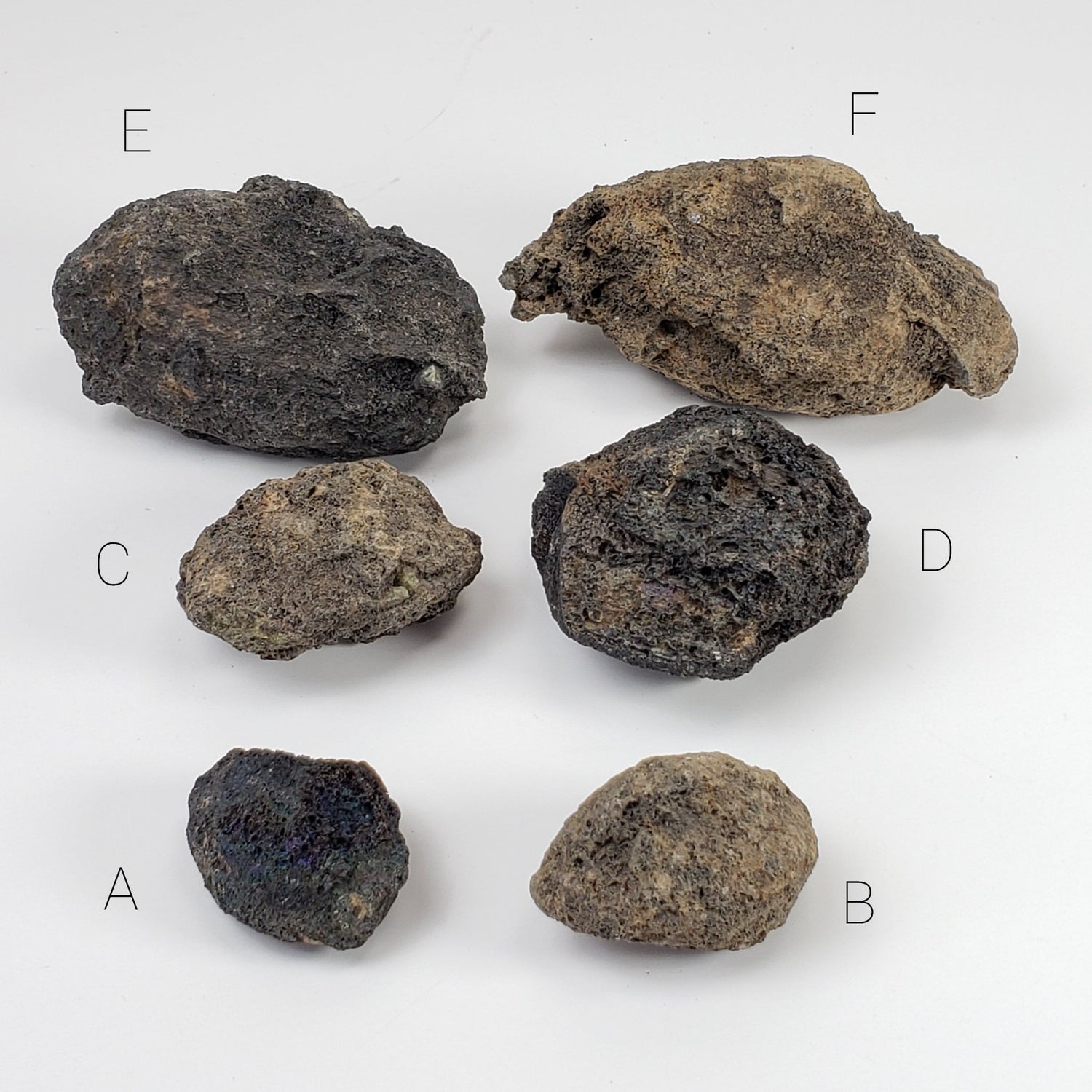

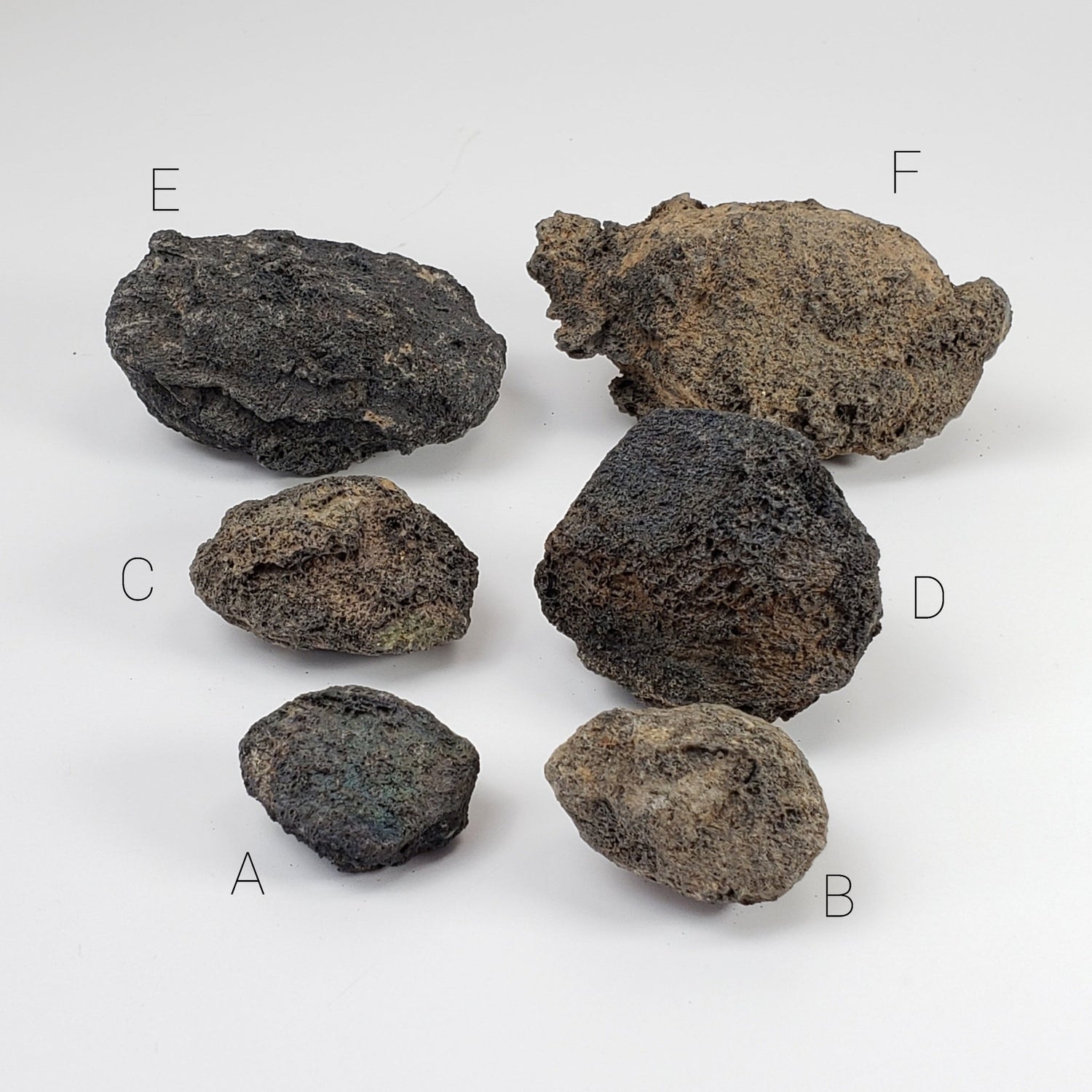
Olivine Volcanic Bombs | Uncut Lava Rock Crystal | Mt Shadwell Volcano, Australia
From $8.39 CAD
Unit price perOlivine Volcanic Bombs | Uncut Lava Rock Crystal | Mt Shadwell Volcano, Australia
From $8.39 CAD
Unit price perThese are whole, uncut lava coated volcanic bombs from Mortlake, Victoria, Australia . The lava crust on these pieces is complete, they can be showcased as is or cut to show the interior. The lava is most likely covering green olivine crystals.
An olivine volcanic bomb is a type of volcanic rock that contains olivine crystals and has been ejected during a volcanic eruption. Olivine is a mineral that is commonly found in the Earth's mantle and is one of the first minerals to crystallize as magma cools.
Volcanic bombs are large clots of lava that are ejected from a volcano during an explosive eruption. They can vary in size, and their shapes are often streamlined due to their molten nature as they are thrown through the air. When these volcanic bombs contain olivine crystals, they are referred to as olivine volcanic bombs.
The dimensions and weight of each of these olivine bombs are as follows:
A. 32x25x17 mm / 1.3x1.0x0.7 in | 14.2 gr / 0.5 oz
B. 37x25x22 mm / 1.5x1.0x0.9 in | 23 gr / 0.8 oz
C. 43x34x21 mm / 1.7x1.3x0.8 in | 37 gr / 1.3 oz
D. 49x44x34 mm / 1.9x1.7x1.3 in | 63.6 gr / 2.2 oz
E. 66x44x33 mm / 2.6x1.7x1.3 in | 113.5 gr / 4.0 oz
F. 79x48x38 mm / 3.1x1.9x1.5 in | 145.4gr / 5.1 oz
Any of these Olivine Bombs would be a beautiful addition to any new or existing collection. Comes with a Canagem Collection specimen card.


Diopside Crystal Cluster | 31 grams | Biotite Mica Micro | Otter Lake, Québec, Canada
$80.00 CAD
Unit price perDiopside Crystal Cluster | 31 grams | Biotite Mica Micro | Otter Lake, Québec, Canada
$80.00 CAD
Unit price perHere's a beautiful cluster of glassy green diopside crystals from Otter Lake, Québec. The specimen is made up of about six inter grown diopside crystals with some small attached biotite mica crystals. The largest diopside is 2.5cm across x 3.5cm. This is a floater specimen and all crystals are complete. The specimen is in excellent condition. The diopside crystals are prismatic habit with complex terminations. It has a nice luster and lovely green color. Would be a beautiful addition to any new or existing collection.
Name: Green Diopside crystal
Specimen Size: Miniature-Sized
Dimensions: 32x34x32 mm / 1.2x1.3 x 1.2 inches
Weight: 31 Grams / 1.1 oz
Origin: Famous Western Québec Location, Otter Lake area, Canada
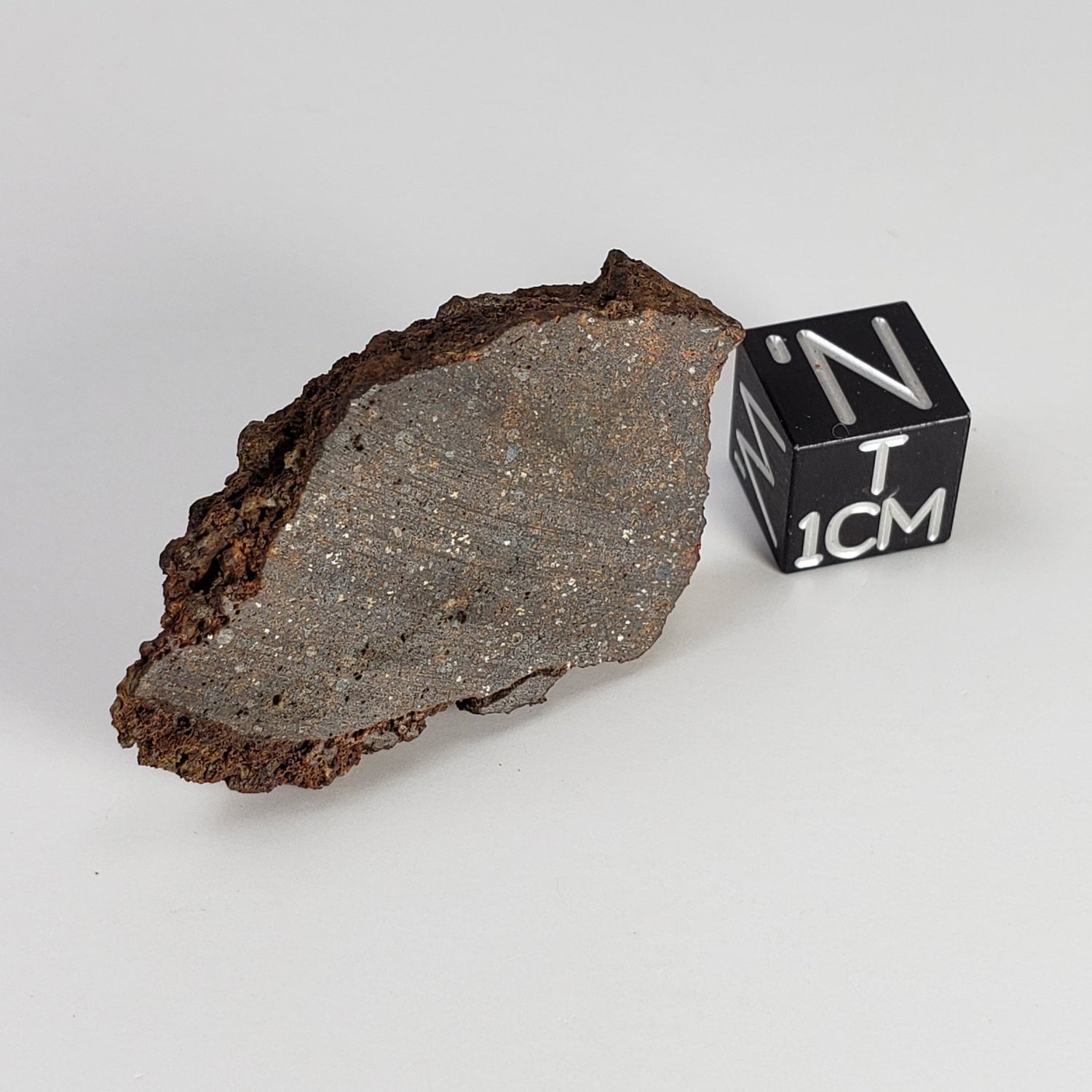
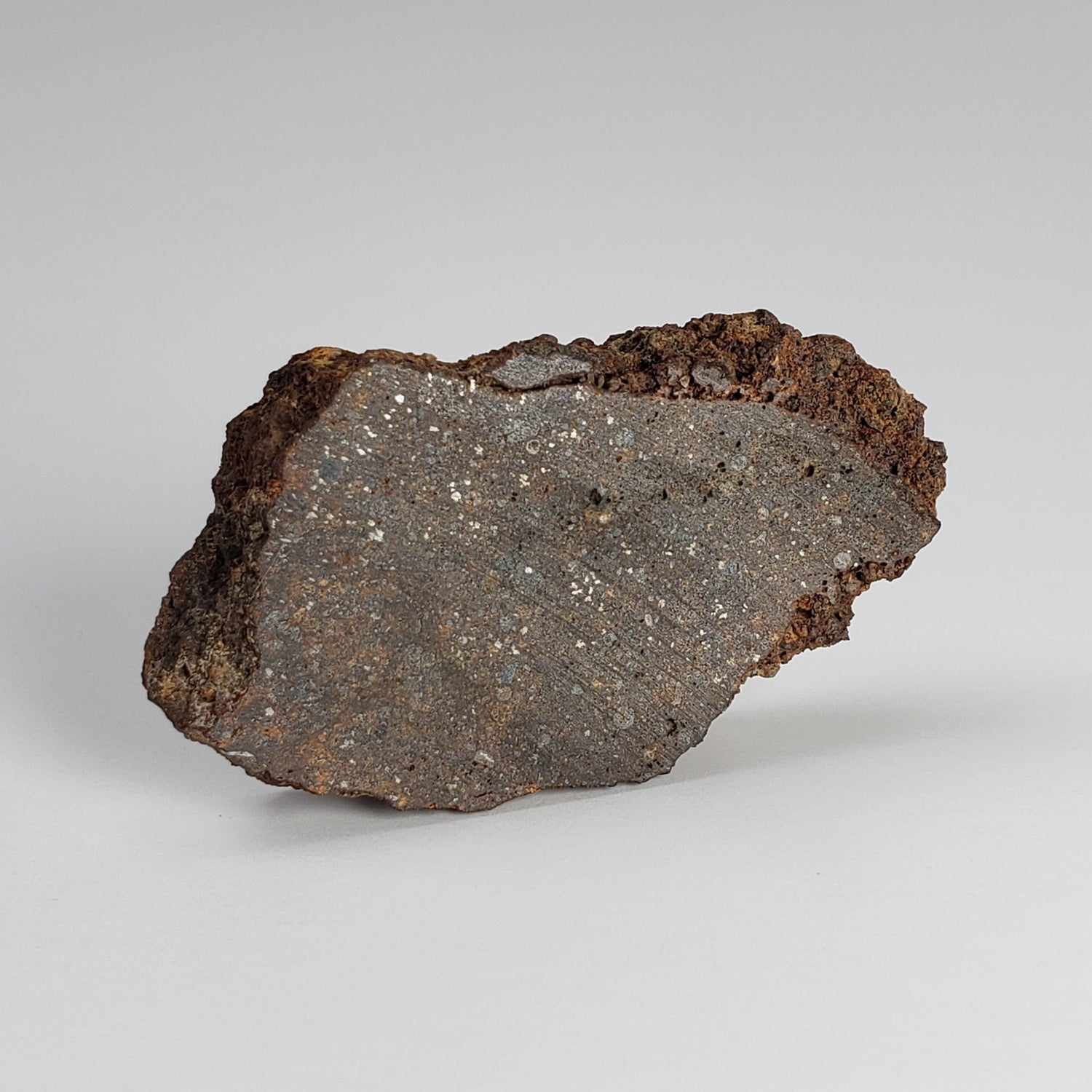
Korra Korrabes Meteorite | 11.1 Gr | Slice | H3 | Gibeon Strewnfield | Namaland, Namibia
$121.00 CAD
Unit price perKorra Korrabes Meteorite | 11.1 Gr | Slice | H3 | Gibeon Strewnfield | Namaland, Namibia
$121.00 CAD
Unit price perThis is an incredible Korra Korrabes meteorite slice of 11.1 grams, it measures 37x22x7 mm. This gorgeous classified meteorite is an H3 Chondrite and part of a 22 kg stone plus 11 smaller pieces totaling ~18 kg that were found November 1996 in a dry river bed by a farmer who was searching for Gibeon irons.
People searching with metal detectors recovered hundreds of additional buried, more weathered pieces within 50 m of the original material since 2000 November, bringing the total mass to ~120–130 kg. The largest specimen was used in a garden wall until August 2000.
This amazing piece was professionally prepared and would be a beautiful addition to any new or existing collection. Comes with a Baitylia Meteorite Collection and a Canagem Collection specimen card.
This is a fabulous specimen of black kyanite mined in Marilac, Safira pegmatite district, Eastern Brazilian pegmatite province, Minas Gerais, Brazil. The specimen will sit perfectly flat to allow easy display in a favorable position.
Kyanite is a silicate mineral and is known to be one of the most attractive natural minerals in the world. Frequently found with lustrous bladed crystals, the intensity of color varies by location of extraction. Kyanite regularly forms fibrous, radiating crystals, as well as flattened and tabular. Some crystals form with white striations, color bands, and even multi-colored crystals, though typically found with a deep blue streak running down the middle.
Name: Kyanite Crystal
Specimen Size: Cabinet-Sized
Dimensions: 77x45x31 mm / 3.0x1.8x1.2 inches
Weight: 164 grams / 5.8 Ounces
Origin: Safira pegmatite district, Eastern Brazilian pegmatite province, Minas Gerais, Brazil


Olivine Volcanic Bomb | Lava Coated Crystal | 187.4 gr | Mt Shadwell Volcano, Australia
$98.00 CAD
Unit price perOlivine Volcanic Bomb | Lava Coated Crystal | 187.4 gr | Mt Shadwell Volcano, Australia
$98.00 CAD
Unit price perAn olivine volcanic bomb is a type of volcanic rock that contains olivine crystals and has been ejected during a volcanic eruption. Olivine is a mineral that is commonly found in the Earth's mantle and is one of the first minerals to crystallize as magma cools.
Volcanic bombs are large clots of lava that are ejected from a volcano during an explosive eruption. They can vary in size, and their shapes are often streamlined due to their molten nature as they are thrown through the air. When these volcanic bombs contain olivine crystals, they are referred to as olivine volcanic bombs.
This piece has been cut to showcase the beautiful green olivine crystals. It would be a beautiful addition to any new or existing collection. Comes with a Canagem Collection specimen card. Stand is not included.
Name: Lava Coated Volcanic Crystal Bomb
Specimen Size: Cabinet-Sized
Dimensions: 81x55x44 mm / 3.2x2.2x1.7 Inches
Weight: 187.4 Grams / 6.6 Ounce
Details: Volcanic activity Mortlake, Victoria, Australia


Olivine Volcanic Bomb | Lava Coated Crystal | 200.7 gr | Mt Shadwell Volcano, Australia
$111.00 CAD
Unit price perOlivine Volcanic Bomb | Lava Coated Crystal | 200.7 gr | Mt Shadwell Volcano, Australia
$111.00 CAD
Unit price perAn olivine volcanic bomb is a type of volcanic rock that contains olivine crystals and has been ejected during a volcanic eruption. Olivine is a mineral that is commonly found in the Earth's mantle and is one of the first minerals to crystallize as magma cools.
Volcanic bombs are large clots of lava that are ejected from a volcano during an explosive eruption. They can vary in size, and their shapes are often streamlined due to their molten nature as they are thrown through the air. When these volcanic bombs contain olivine crystals, they are referred to as olivine volcanic bombs.
This piece has been cut to showcase the beautiful green olivine crystals. It would be a beautiful addition to any new or existing collection. Comes with a Canagem Collection specimen card. Stand is not included.
Name: Lava Coated Volcanic Crystal Bomb
Specimen Size: Cabinet-Sized
Dimensions: 96x51x39 mm / 3.8x2.0x1.5 Inches
Weight: 200.7 Grams / 7.1 Ounce
Details: Volcanic activity Mortlake, Victoria, Australia
This is a nice end cut of the Northwest Africa 978 meteorite. This is another of the great and rare meteorites from the Sahara. It is classified as a Stone, Chondrite Rumurutiite, (R3.8). This meteorite was found in 2001 in many fragments and small individuals, very fresh but sandblasted for a low TKW of 722 grams. The Shock stage is registered at 3 and the Weathering grade at 2.
It is one of the rarest meteorite types with only 9 Rumuruti 3.8 type meteorites known, most being found in Antarctica. This unique group of chondrites has basically no FeNi-metal in comparison to other chondrite groups. The R chondrites also have the highest 17O value of any other solar system material. This piece weighs 3.03 grams an measures 20x14x6mm. Note the flat edge of this piece is crusted, it is not a cut surface.
This hard to acquire piece displays very well with its diamond lap finish and this high quality specimen would make an amazing addition to any new or existing collection. Comes with a Canagem Collection specimen cards.
This Microcline feldspar cluster from Nevada is a quality specimen that would be a beautiful addition to any new or existing rock collection.
Microcline is one of the most common feldspar minerals. It can be colorless, white, cream to pale yellow, salmon pink to red, or bright green to blue-green. Microcline forms short prismatic or tabular crystals that are often of considerable size: single crystals can weigh several tons and reach yards in length.
Crystals are often multiply twinned, with two sets of fine lines at right angles to each other. This gives a plaid effect that is unique to microcline among the feldspars.
Name: Microcline
Specimen Size: Large Cabinet-Sized
Dimensions: 116x88x45 mm / 4.6x3.5x1.8 inches
Weight: 389 grams / 13.7 oz
Origin: Search Light District, Nevada, USA


Natural Tourmaline on Quartz | Raw Schorl Crystal | 417.8 grams | Fitchburg, MA, USA
$61.00 CAD
Unit price perNatural Tourmaline on Quartz | Raw Schorl Crystal | 417.8 grams | Fitchburg, MA, USA
$61.00 CAD
Unit price perThis is a beautiful Tourmaline, also known as schorl, on quartz and matrix crystal cluster from Emmons Pegmatite, Oxford Co., MA. The specimen has many individual crystal faces. with the front, top and back covered with many sharp lustrous black tourmaline or schorl crystals that are in good condition.
Product Name: Tourmaline Crystal on Quartz Matrix
Specimen Size: Cabinet Sized
Dimensions: 97x90x66 mm / 3.8x3.5x2.6 inches
Weight: 417.8 Gram/ 14.7 Ounces
Origin: Emmons Pegmatite, Oxford Co., MA, USA
This is a superb looking Stony-iron or Mesosiderite Vaca Muerta (Dead Cow) classified meteorite weighing 5.2 grams. Its dimensions are 26x12x9 mm.
This classified meteorite was found in 1861 in the driest desert of the world called the Atacama, in Chile. Mesosiderites are formed on the surface of a parent body as a result of impacts with another body. The impact mixed broken fragments of surface eucrites with iron and olivine from deep within the body. Eucrites are believed to have come from the asteroid Vesta. Analysis has shown, however, that the Vaca Muerta eucrite inclusions are not consistent with other eucrites and possibly originated on a different parent body. Although most have a weathered exterior, they also have lots of metal inside and can be prepared and cut to show this.
This piece displays extremely well and would be a beautiful addition to any new or existing collection. Comes with a BA-Meteorites (Dr. Bernhard Brinker, Mineralogist and Martin Altmann, IMCA #3825) and a Canagem Collection specimen card.
This Pyrite on Quartz Crystal specimen from Peru is a natural raw mineral with the entire front of the specimen being covered with many sharp well formed clear quartz crystals. There are many brassy pyrite crystals throughout the quartz. The specimen is in very good condition. Would be a beautiful addition to any new or existing collection.
Quartz is considered a “master healer.” It's believed to amplify energy by absorbing, storing, releasing, and regulating it. It's thought to aid concentration and memory. Quartz is also said to be a power gemstone that harmonizes and balances; enhancing energy and thoughts as well as purifying the spiritual, mental and physical. Quartz is associated with the crown chakra.
Name: Pyrite on Quartz Crystals
Specimen Size: Cabinet-Sized
Dimensions: 80x44x21 mm / 3.1x1.7x0.8 inches
Weight: 59 grams / 2.1 Ounces
Origin: Mined in Quiruvilca Mine, Peru
This Pyrite on Quartz Crystal specimen from Pasco, Peru is a natural raw mineral featuring transparent sharp quartz crystals with clusters of small pyrite crystals embedded throughout. The specimen is in very good condition. Would be a beautiful addition to any new or existing collection.
Quartz is considered a “master healer.” It's believed to amplify energy by absorbing, storing, releasing, and regulating it. It's thought to aid concentration and memory. Quartz is also said to be a power gemstone that harmonizes and balances; enhancing energy and thoughts as well as purifying the spiritual, mental and physical. Quartz is associated with the crown chakra.
Name: Pyrite on Quartz Crystals
Specimen Size: Cabinet-Sized
Dimensions: 60x49x50 mm / 2.4x1.9x2.0 inches
Weight: 90.6 grams / 3.2 Ounces
Origin: Mined in Pasco, Peru

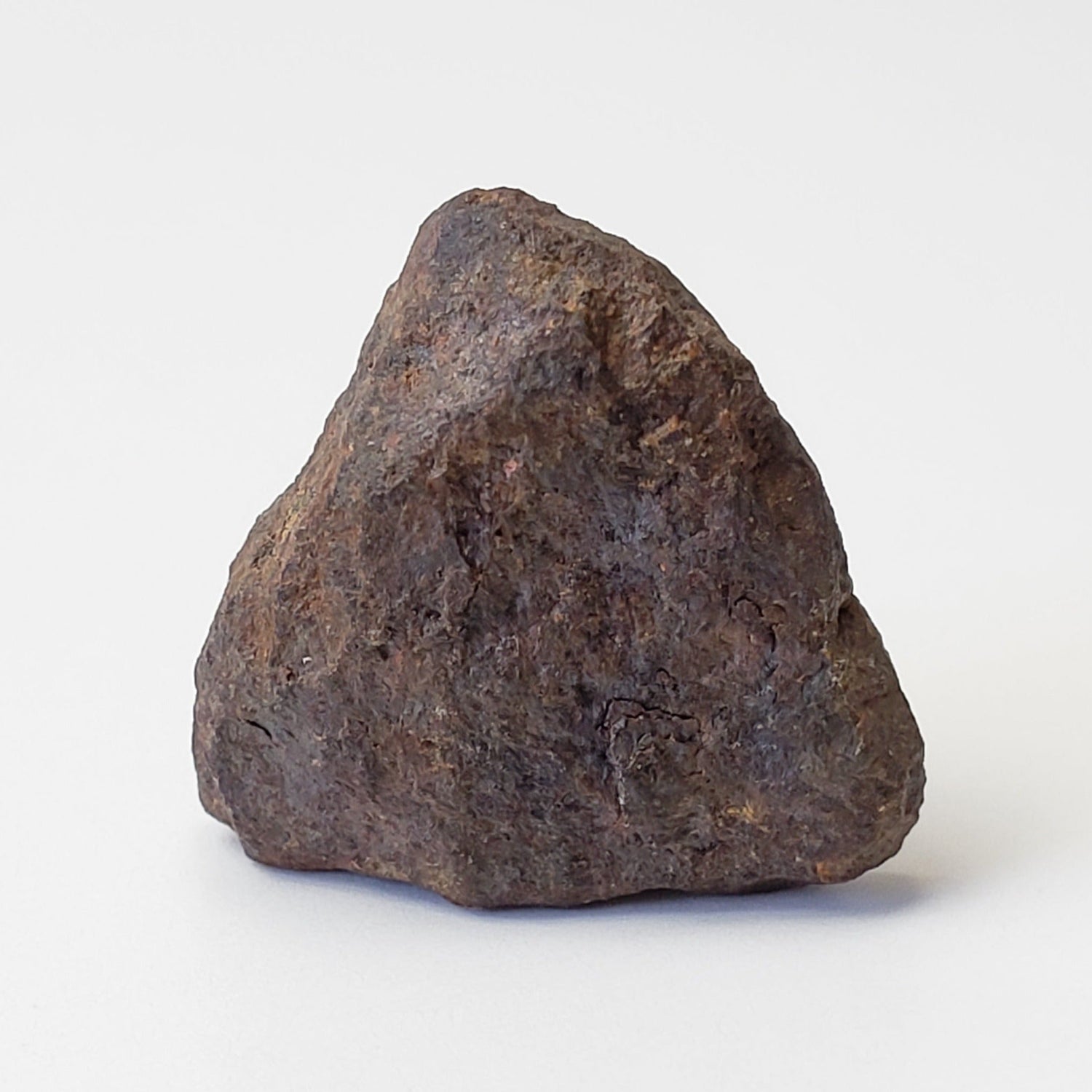
Vaca Muerta Meteorite | 3.12 Grams | End Cut | Rare Eucrite Nodule | Chile
$54.00 CAD
Unit price perVaca Muerta Meteorite | 3.12 Grams | End Cut | Rare Eucrite Nodule | Chile
$54.00 CAD
Unit price perHere we have for you a superb end cut of the famous Vaca Muerta (Dead Cow) classified meteorite weighing 3.12 grams. Its dimensions are 20x19x5 mm.
This classified meteorite was found in 1861 in the driest desert of the world called the Atacama, in Chile. Mesosiderites are formed on the surface of a parent body as a result of impacts with another body. The impact mixed broken fragments of surface eucrites with iron and olivine from deep within the body. Eucrites are believed to have come from the asteroid Vesta.
Analysis has shown, however, that the Vaca Muerta eucrite inclusions are not consistent with other eucrites and possibly originated on a different parent body. This particular specimen is a cut of a eucrite nodule with none of the typical mesosiderite of Vaca Muerta.
This rare specimen displays extremely well and would be a beautiful addition to any new or existing collection. Comes with an ELKK Meteorites and a Canagem® specimen card.
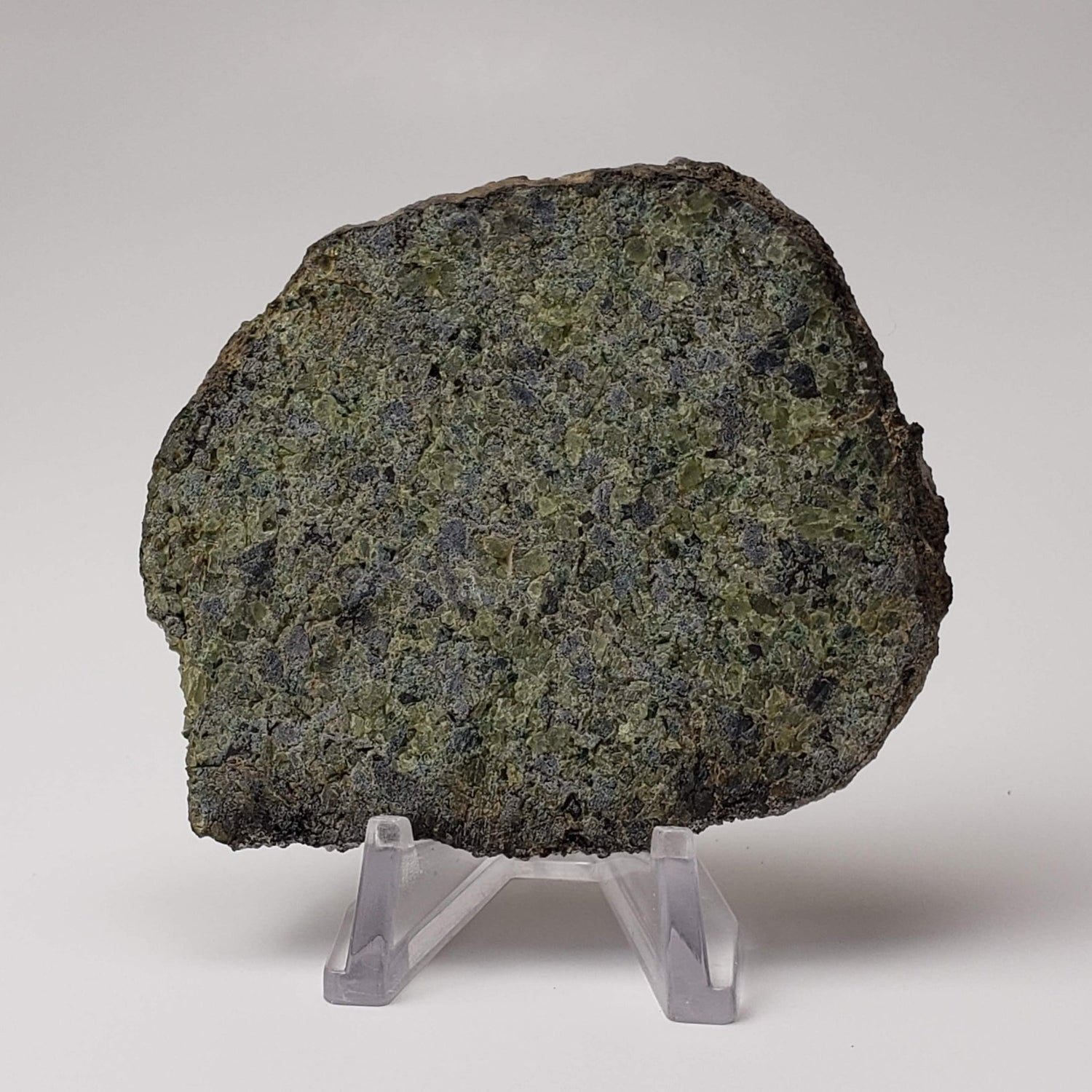
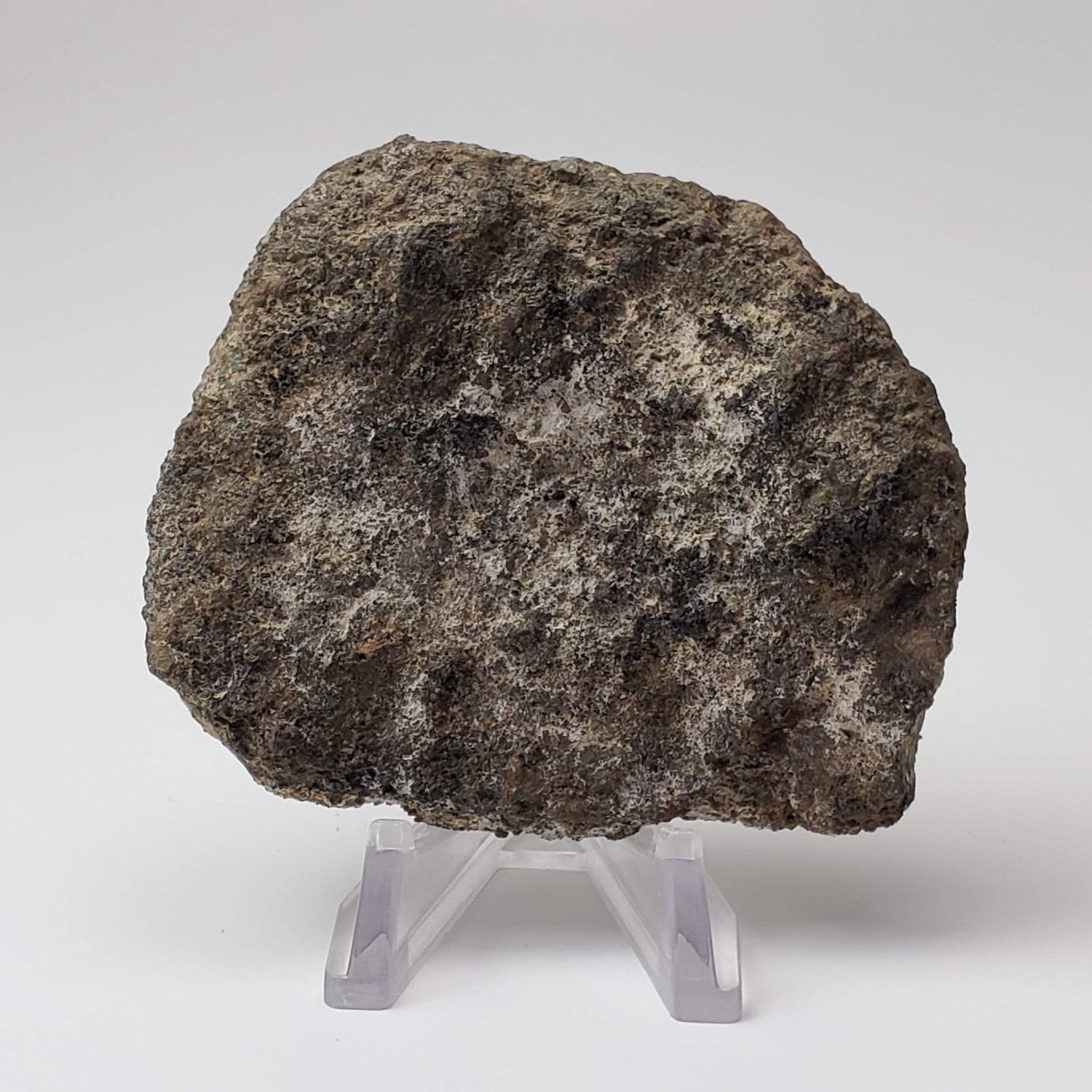
Olivine Volcanic Bomb | Lava Coated Crystal | 116.6 gr | Mt Shadwell Volcano, Australia
$62.00 CAD
Unit price perOlivine Volcanic Bomb | Lava Coated Crystal | 116.6 gr | Mt Shadwell Volcano, Australia
$62.00 CAD
Unit price perAn olivine volcanic bomb is a type of volcanic rock that contains olivine crystals and has been ejected during a volcanic eruption. Olivine is a mineral that is commonly found in the Earth's mantle and is one of the first minerals to crystallize as magma cools.
Volcanic bombs are large clots of lava that are ejected from a volcano during an explosive eruption. They can vary in size, and their shapes are often streamlined due to their molten nature as they are thrown through the air. When these volcanic bombs contain olivine crystals, they are referred to as olivine volcanic bombs.
This piece has been cut to showcase the beautiful green olivine crystals. It would be a beautiful addition to any new or existing collection. Comes with a Canagem Collection specimen card. Stand is not included.
Name: Olivine Volcanic Bomb
Specimen Size: Cabinet-Sized
Dimensions: 74x61x13 mm / 2.9x2.4x0.5 Inches
Weight: 116.6 Grams / 4.1 Ounce
Details: Volcanic activity Mortlake, Victoria, Australia
This beautiful Apophyllite specimen is of significant size and will include the stand seen in the photos.
Apophyllite is a mineral belonging to the phyllosilicate group. It is known for its distinctive crystal formations, often occurring in clusters with a unique beauty. Apophyllite crystals are usually colorless or white, allowing them to be transparent or translucent. Although, some specimens may exhibit a greenish, yellowish, or pinkish tint due to the presence of impurities.
Apophyllite often forms as prismatic crystals with a square or rectangular cross-section. It frequently occurs in distinctive pyramid-like structures, and its crystals can be large and well-formed. Apophyllite is found in various locations around the world. Notable occurrences include India, Brazil, Mexico, Germany, and the United States.
Apophyllite is believed to have a calming effect, and to effectively reduce stress, releasing mental blockages and negative thought patterns. Apophyllite is also said to release suppressed emotion, to overcome anxiety, worries and fears. It calms apprehensions and allows uncertainty to be tolerated.
Name: Apophyllite Crystal Cluster
Specimen Size: Large Cabinet-Sized
Dimensions: 151x102x 67 mm / 5.9x4.0x2.6 inches
Weight: 1.04 Kg / 2 Lbs 5 Ounces
Origin: Mined in India






